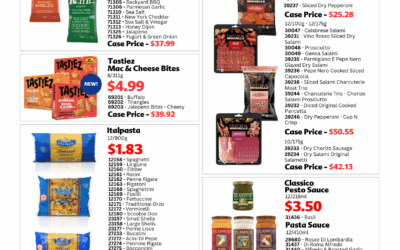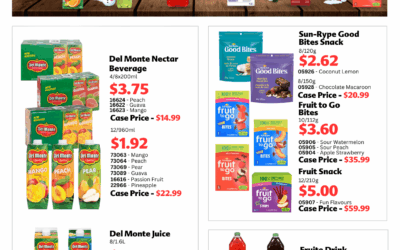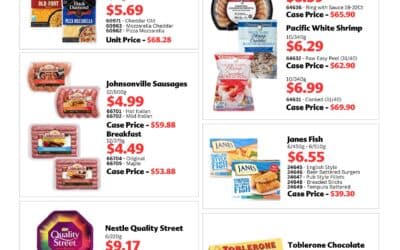Cutting Costs and Waste
Summer is a bustling time for foodservice, bringing increased guest volume and vibrant patio seating. To keep operations running smoothly while managing costs and minimizing waste, smart strategies and tools are essential.
Ways to Cut Costs and Waste
Implementing a few key practices focused on your ingredients and sourcing can help your operation save even more:
Optimize Inventory Management
Keep a close eye on your stock levels to prevent over-ordering and spoilage. Using a “first-in, first-out” (FIFO) system for perishables ensures older products are used before they expire. Regularly review your purchasing habits to find opportunities for bulk discounts or to negotiate better terms with suppliers. Understanding your peak usage times helps you order just what you need, when you need it.
In summer, fresh ingredients like produce and dairy spoil faster — especially with more deliveries being exposed to heat. Plan ahead for these seasonal sensitivities.
Strategic Sourcing and Delivery Scheduling
Work closely with your suppliers to optimize delivery schedules. Consolidating orders and scheduling fewer, larger deliveries can reduce transportation costs. Discuss specific drop-off times that fit your operational flow, making sure staff are ready to receive and store goods efficiently to prevent spoilage or delays. Building strong relationships with local producers can also offer fresher ingredients and potentially better pricing.
Portion Control
Train staff on proper portioning for all dishes and beverages. Consistent portioning not only controls food costs but also minimizes plate waste from customers who can’t finish oversized servings. This also helps maintain consistency in your menu offerings, which is key for customer satisfaction. Popular summer items like salads, frozen treats, and cold beverages are often overpoured or oversized. Training staff to manage these portions can significantly cut back on waste and cost.
Reduce Food Waste
Put a system in place to track food waste, identifying common culprits from prep to plate. This data can help you adjust purchasing, preparation, and menu planning to minimize discards. Consider donating edible surplus food to local charities, or explore composting programs for unavoidable organic waste like fruit and vegetable scraps. Getting creative with ingredients, perhaps turning trim into stocks or sauces, can also make a big difference.
The summer season brings unpredictability — a sudden thunderstorm can kill patio traffic for the day. Monitor waste closely and adjust ordering accordingly to avoid spoilage from fluctuating foot traffic.
By focusing on these areas related to your food products and how you manage them, you can create a more efficient and sustainable operation, ensuring your business thrives even during the busiest times!










